Whaley Bridge: How safe are Britain's dams?
- Published
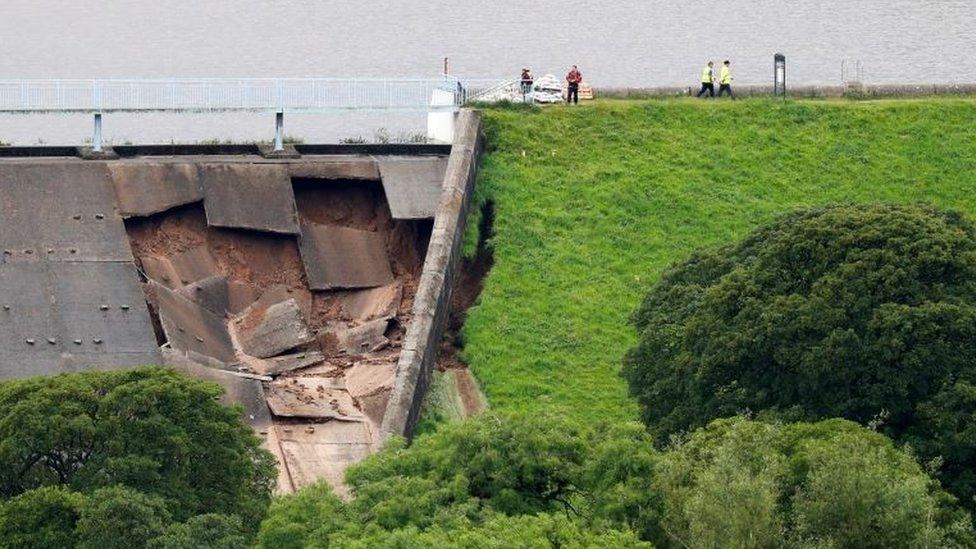
Engineers feared Whaley Bridge could be swamped if the Toddbrook Reservoir burst
Hundreds of people have been evacuated from the Derbyshire town of Whaley Bridge after part of a dam collapsed. So what has happened at Toddbrook Reservoir, and how safe are Britain's dams?
How does the dam work?
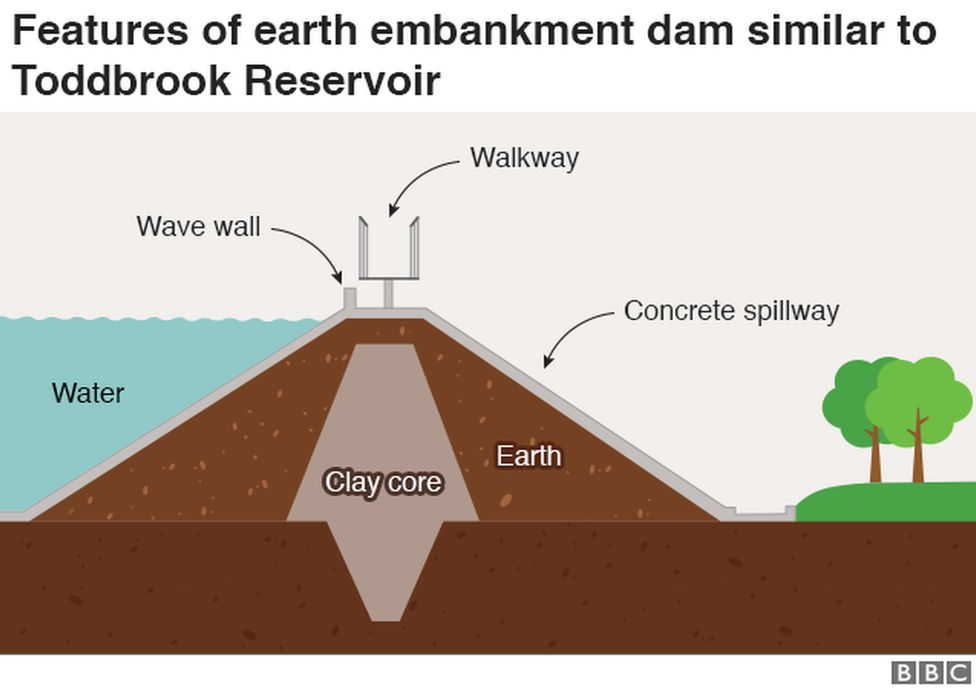
Toddbrook Reservoir has what is known as an earth dam.
Richard Coackley, former president of the Institution of Civil Engineers, said the structures, also referred to as earthfill or embankment dams, feature:
A core made from puddle clay, the same watertight material used to make canals, to stop water going through the dam
Soil which surrounds the core and helps to hold it in place
Over time, the earth on either side of the core compacts, increasing the stability of the dam
Spillways - usually made of concrete - which drain water away when water levels get too high, a bit like an overflow on a bath
What went wrong at Toddbrook?
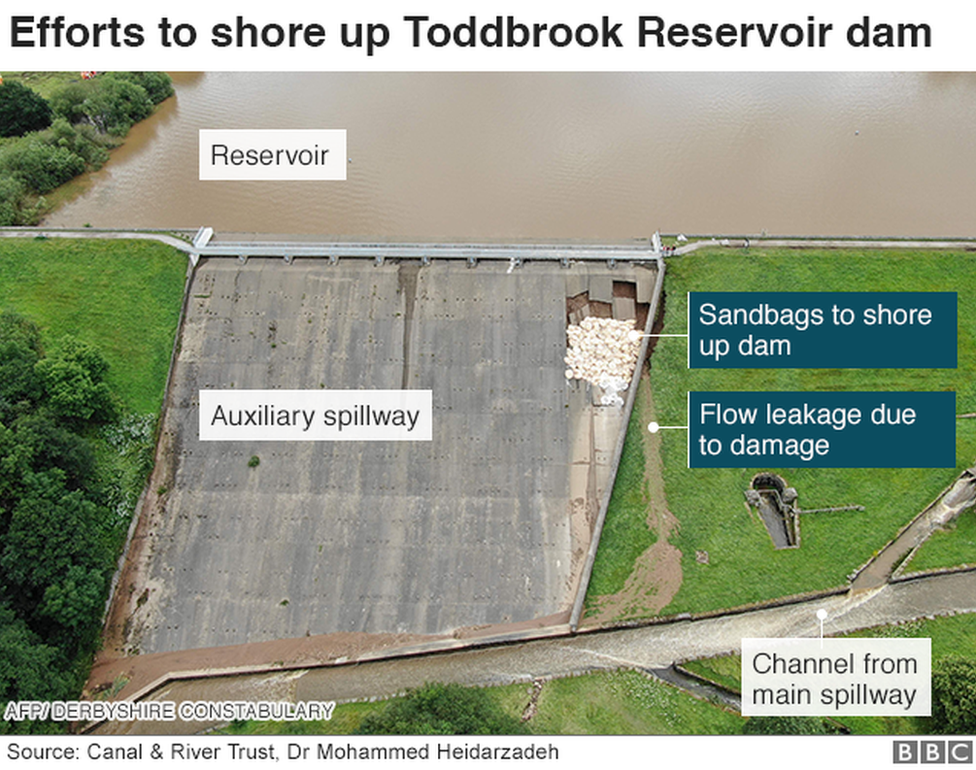
Heavy rainfall caused water levels in the reservoir to rise and start flowing over the auxiliary - or emergency - spillway.
The structure failed and was partly eroded away by water flowing over it.
Alan Warren, chairman of the British Dam Society, said the cause was unclear.
"We don't know whether the concrete was inadequate or whether there was some problem underneath those concrete slabs which means the slabs fell into a void that had been forming underneath," he said.
"Maybe the joints in the slabs weren't properly sealed, and water was getting in through the joints."
Mr Coackley said photos suggested water had washed away soil beneath the slabs but the clay core was still intact.
"That's why the dam is still secure there at this stage," he said.
How many dams do we have?
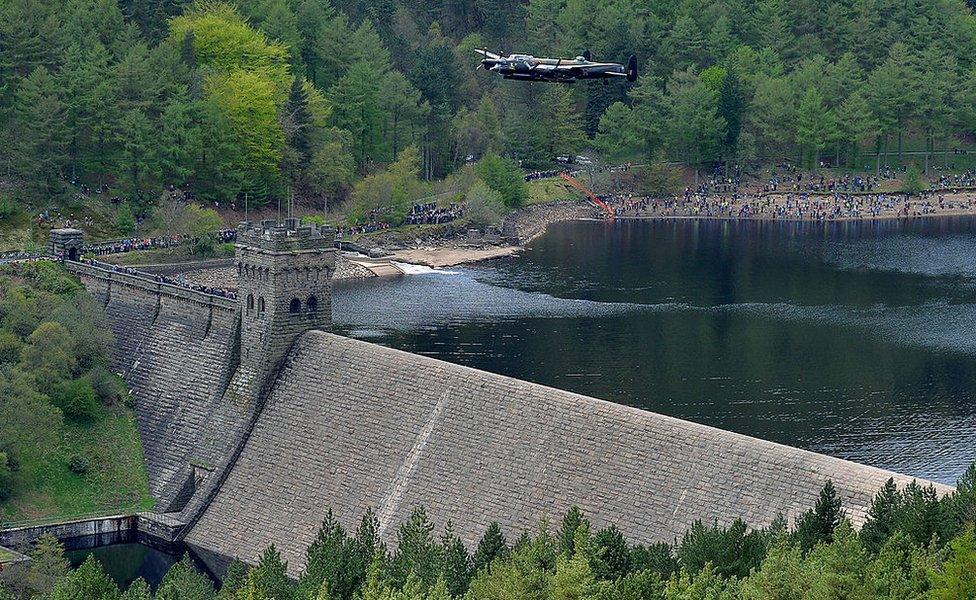
Derwent Dam in Derbyshire is famous for being where the Dambusters practised their air raids during World War Two
There are about 2,000 dams in England and Wales and about 800 in Scotland, according to Mr Coackley.
They have various owners and serve a range of purposes, he said.
"Water companies providing drinking water are major ones, then there are reservoirs providing water supplies to the original canal system.
"There are other dams just for fishing and there are other dams just for sailing and water sports. Other dams are to provide water for agriculture."
Toddbrook's dam was built in the 1830s to create the reservoir, providing hydraulic power and water for the canal system.
It still provides that water and is owned by the Canal and River Trust.
Mr Coackley said Toddbrook helped to create wealth for Whaley Bridge before goods could be transported by road, and was still important for tourism and the local economy.
Who makes sure dams are safe?

The Canal and River Trust said the dam was "absolutely fine" when inspected in November
All reservoirs in England and Wales with a capacity above 25,000 cubic metres above ground level must comply with the Reservoirs Act, external.
Every dam must have a supervising civil engineer and an inspecting civil engineer to file annual safety reports to Defra, Mr Coackley said.
"That's part of an Act of Parliament that goes back 100 years."
The Canal and River Trust said the annual inspection of Toddbrook Reservoir in November was "absolutely fine".
This coincided with an independent inspection taking place every 10 years, and this was fine, too.
"Our engineers also inspect the reservoir twice-weekly and this is how we picked up the problem," said a spokeswoman.
Scotland has its own, separate Reservoirs Act, external, which requires owners to file safety reports with the Scottish Environment Protection Agency.
How often do dams fail?
Aerial views of one of the Oroville Dam's two damaged spillways
Mr Coackley said failures were "very unusual indeed".
Prof Nigel Wright, a civil engineer and expert in flood risk management, said the last such evacuation in the UK was in 2007, when cracks appeared in the dam at Ulley Reservoir, external, near Rotherham, following heavy rain.
A new spillway was later built to replace the original which collapsed during the floods.
"Since that, the government has insisted that a lot of dams have been reanalysed to check what the danger is and come up with plans for evacuation if necessary," said Prof Wright, of Nottingham Trent University.
According to an Environment Agency report, external, the last time anyone died due to a dam disaster in the UK was in 1925, when two dams burst, killing 16 people in the north Wales village of Dolgarrog.
That led to improved construction requirements under the Reservoirs Act, introduced in 1930 and updated in 1975.
The UK's worst-ever dam disaster was the Great Sheffield Flood of 1864, which claimed at least 240 lives.
Elsewhere in the world, dam disasters still lead to major loss of life. In January, 300 people died in a mudslide after a dam collapsed near Brumadinho in Brazil.
Mr Warren, of the British Dam Society, said the Whaley Bridge incident was similar to one at Oroville in California in 2017.
"A spillway was damaged, then the auxiliary spillway came into operation and there was erosion on the auxiliary spillway which meant they had to evacuate people downstream," he said.
How safe are people living near dams?
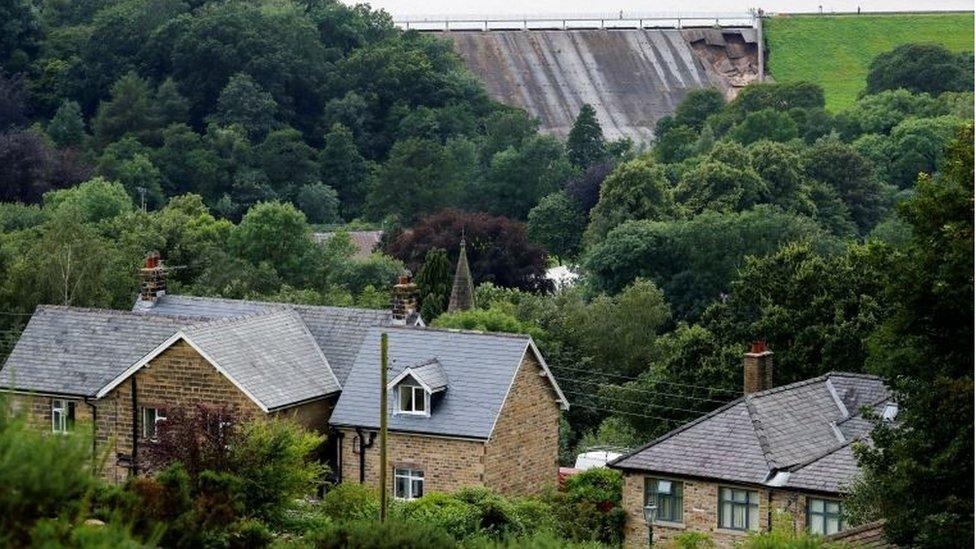
Most residents were evacuated from Whaley Bridge on Thursday
While the failure of a dam could potentially kill hundreds or thousands of people, Mr Coackley said regular checks and maintenance, together with emergency plans, should prevent this.
"There are lots of people living below these dams and they are as safe as you can get," he said.
"It's not a disaster yet. Everything has gone according to plan with the Environment Agency and the emergency services all working with the inspecting engineer on what will be a pre-arranged plan.
"Every reservoir and dam has one of these plans in case of an emergency."
Prof Wright said the evacuation was a precaution, but the right thing to do.
"There's always a chance that you will move people and then nothing will happen, but that's much better than not moving them and then something happens," he said.
Mr Coackley said engineers elsewhere would be looking at the implications of Toddbrook.
"There will be more checks. Dam engineers will be noting what's going on," he said.
"It's really important as an engineer to analyse why this has happened and make sure all of the other dams are safe."
- Published2 August 2019

- Published2 August 2019
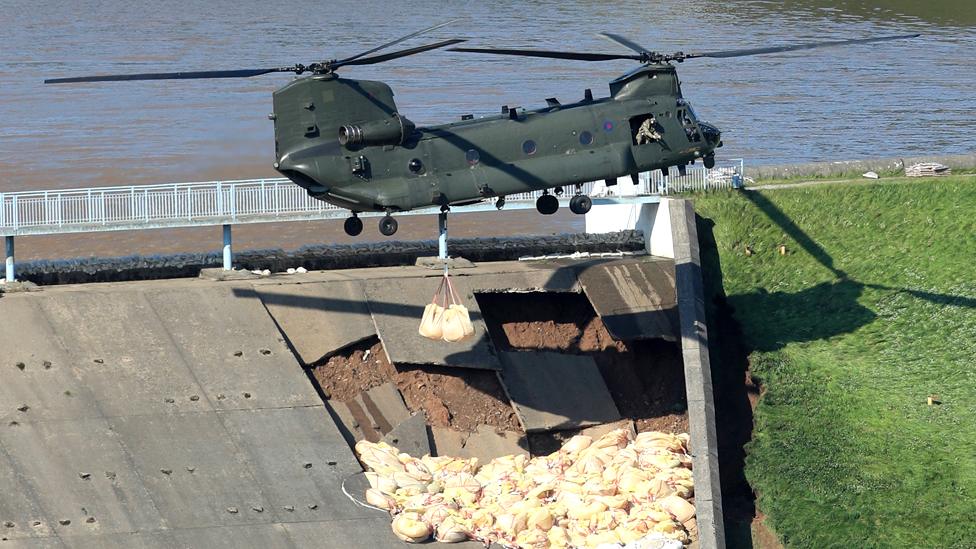
- Published6 August 2019
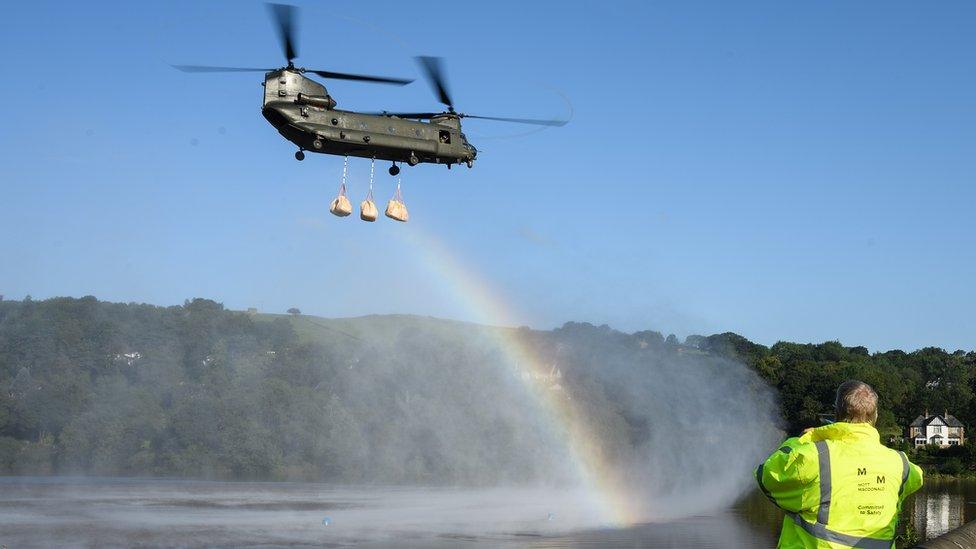
- Published1 August 2019
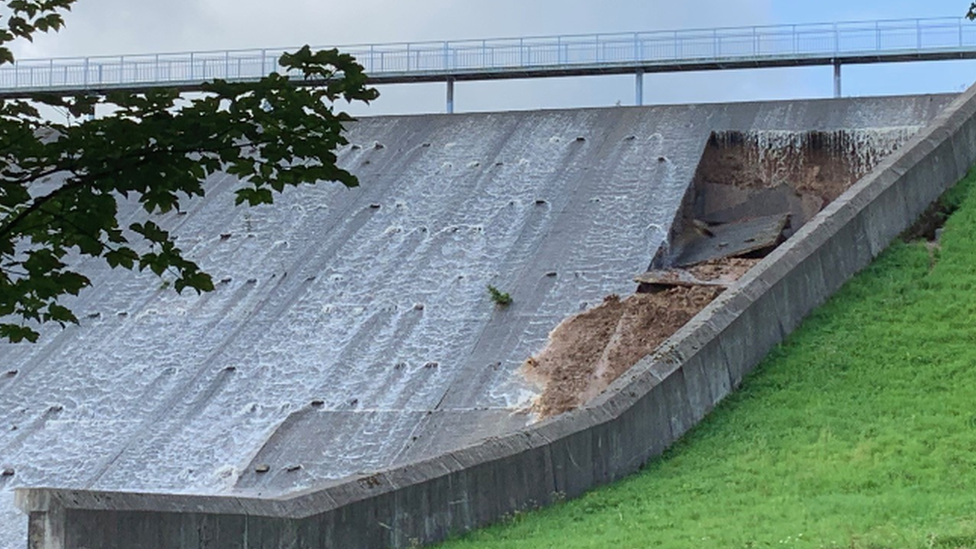
- Published1 August 2019
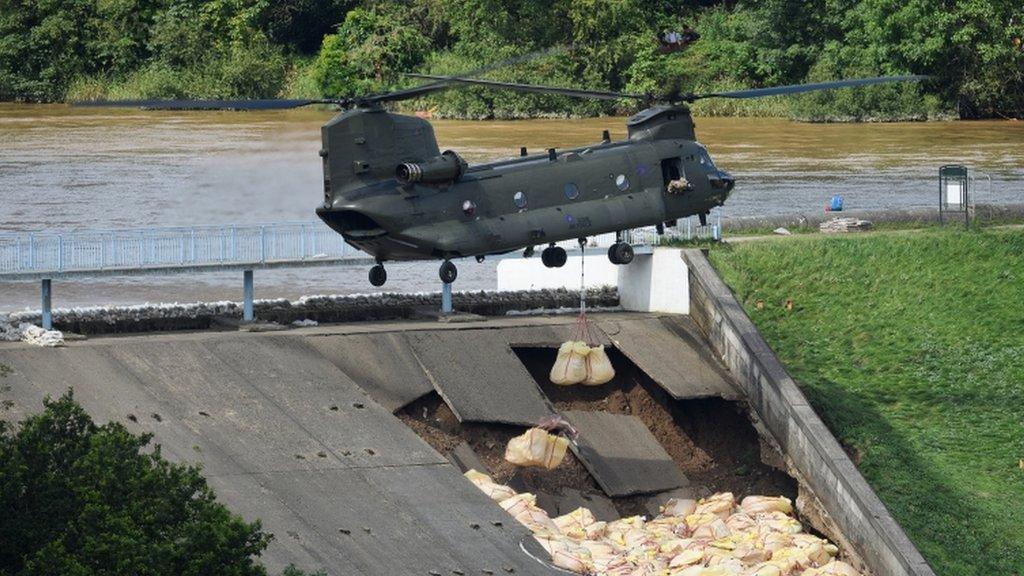
- Published13 February 2017
